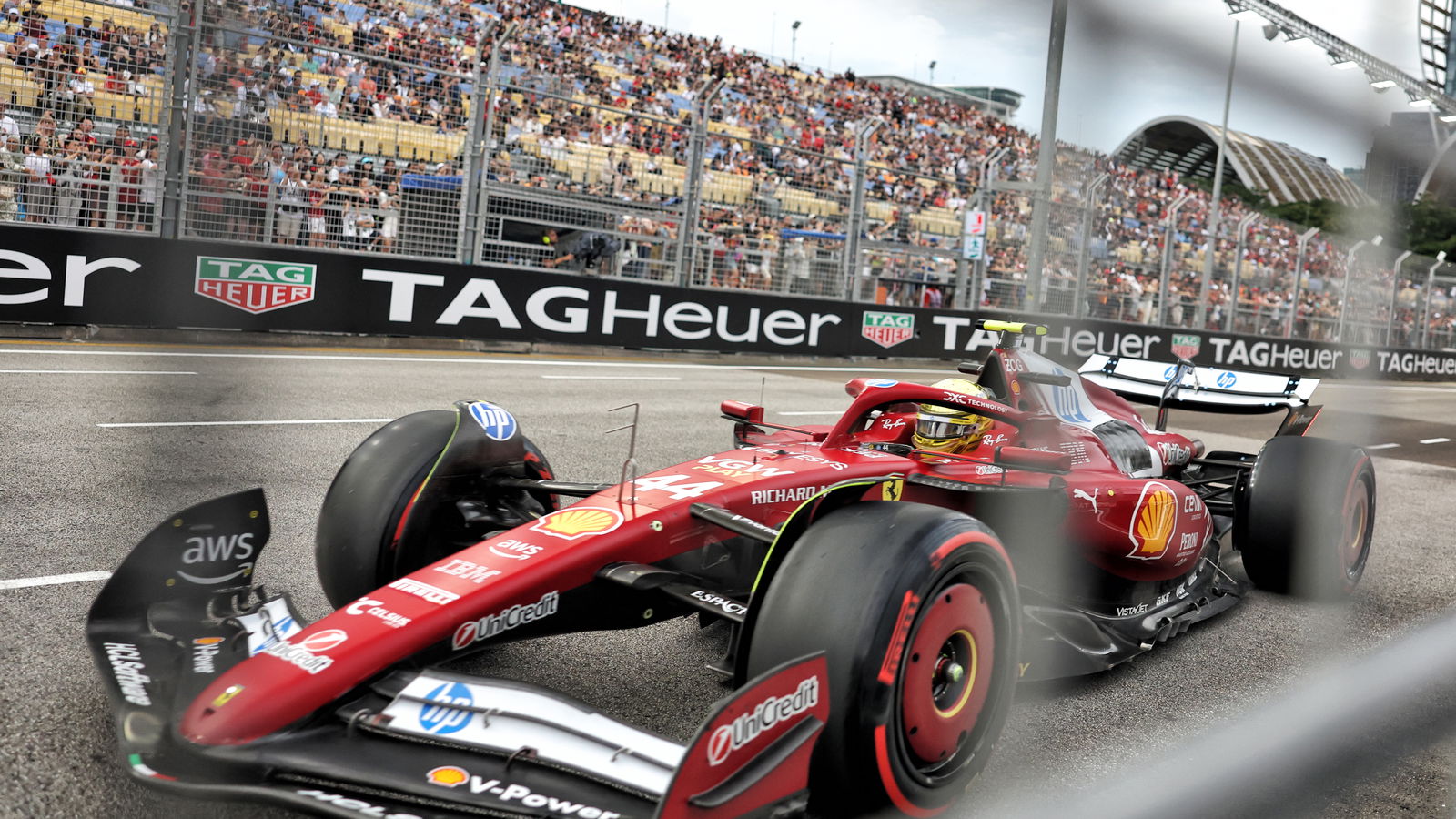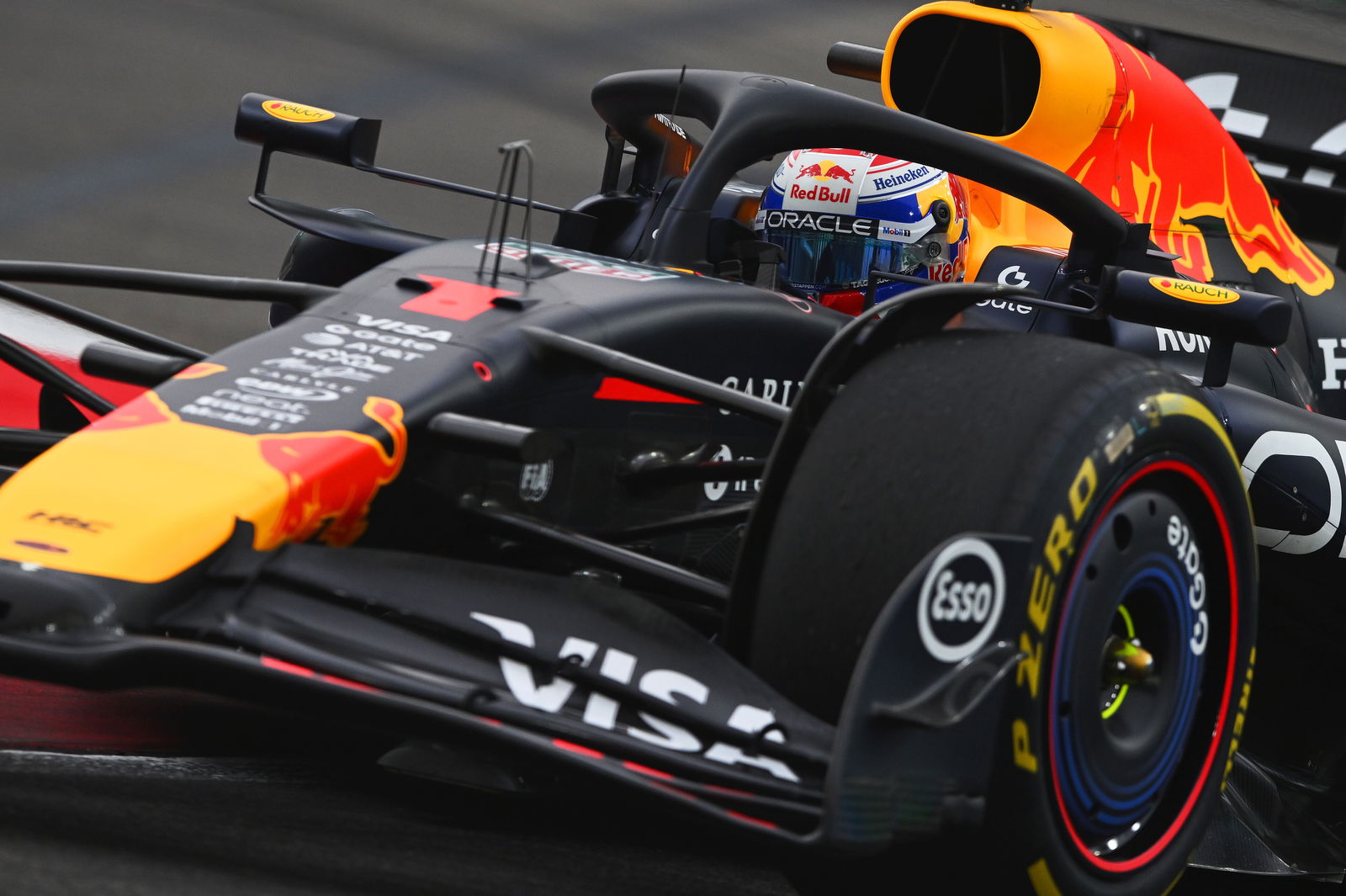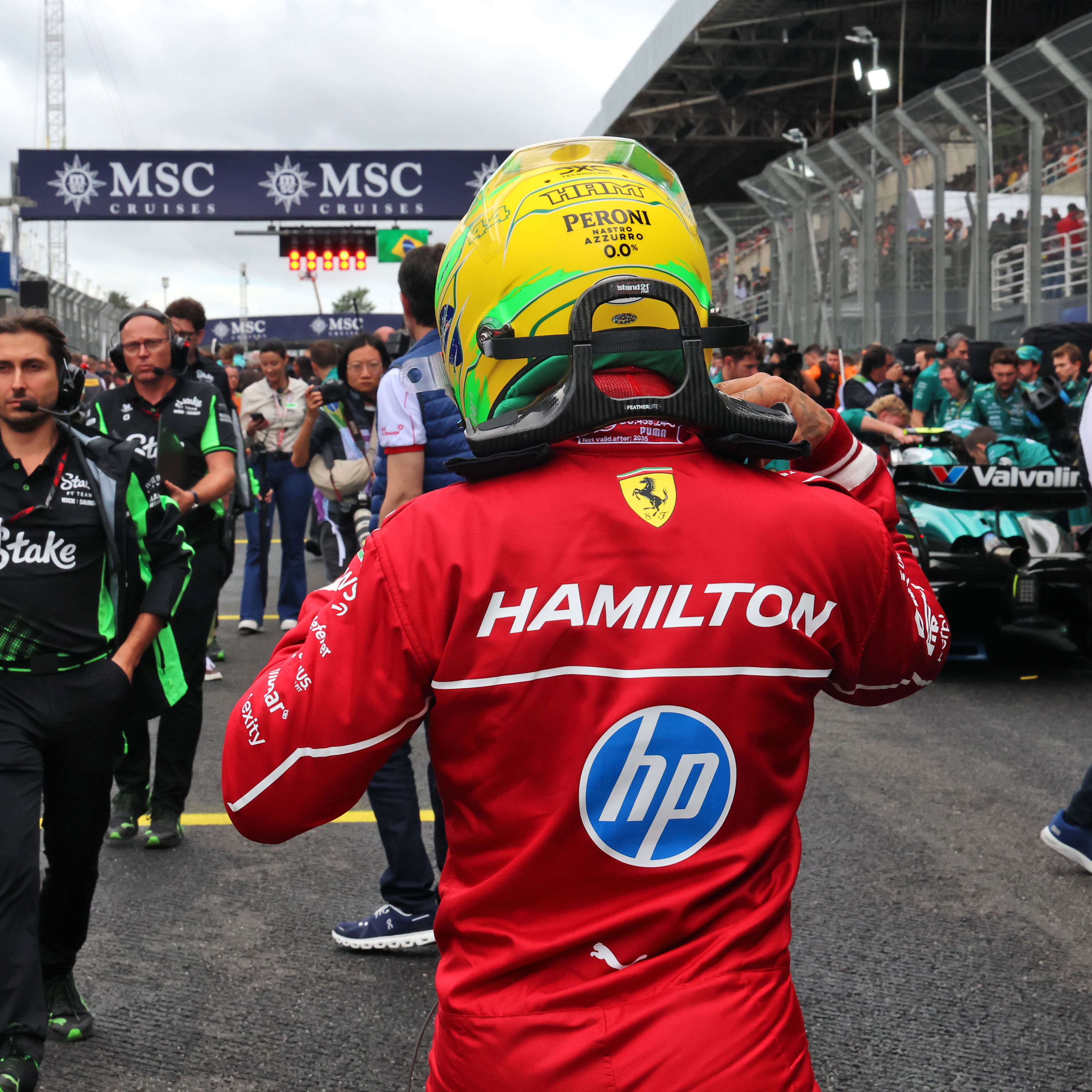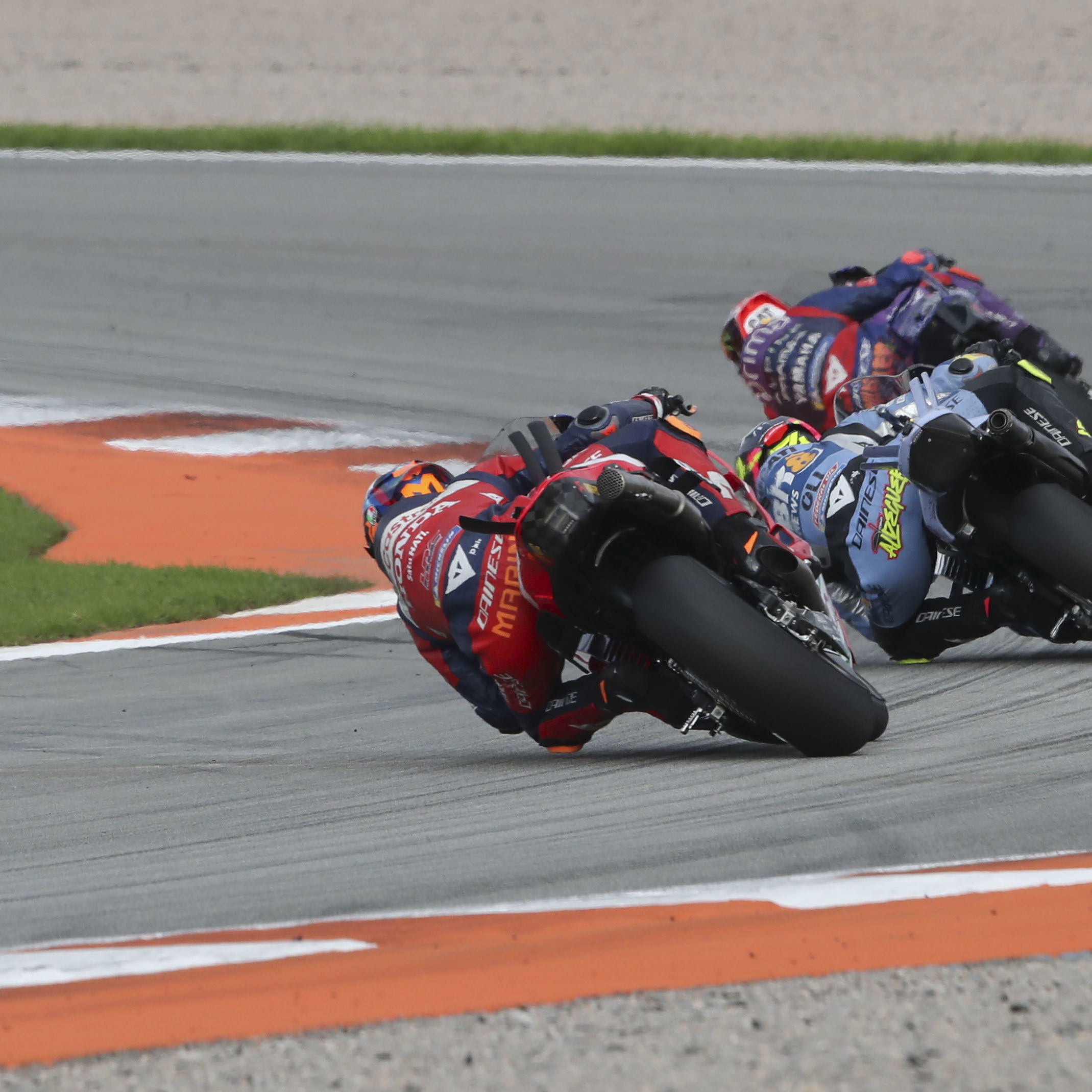Lewis Hamilton escapes Singapore GP penalty for red flag breach
Lewis Hamilton faced an investigation for a red flag infringement.

Lewis Hamilton has escaped picking up a penalty at the Singapore Grand Prix.
The seven-time world champion faced an investigation for an alleged red flag infringement during final practice in Singapore.
Hamilton was noted by the stewards for an apparent infringement when Liam Lawson crashed his Racing Bulls, bringing out a red flag 15 minutes into the session.
Hamilton was seen slowing for red flags at the scene of Lawson's accident, before he sped up to return to the pits.
Red flag infringements in practice typically result in a grid penalty.
Haas driver Oliver Bearman has twice received grid penalties for red flag infringements during practice sessions this year.
At Monaco, Bearman was given a 10-place penalty for overtaking under a red flag, while at Silverstone, the Briton was hit with the same punishment for crashing in the pit lane during a red flag.
However, on this occasion, the stewards deemed there had been no breach of the regulations.
Why Lewis Hamilton wasn't penalised
"The Stewards heard from the driver of Car 44 (Lewis Hamilton), team representative and reviewed positioning/video, timing, telemetry, team radio and in-car video evidence," the stewards said.
"During the red flag period following the incident involving Car 30 (LAW), HAM appeared to be travelling at a notably high speed. However, analysis of the telemetry data showed that between the display of the red flag and the entry to the pit lane, HAM remained above the required minimum time as stipulated by Article 37.6a of the 2025 FIA Formula One Sporting Regulations.
"Regarding the pit lane entry, the car’s speed was marginally higher than that of other cars in comparable situations, but the driver maintained full car control at all times and did not drive in a manner that could be considered unsafe.
"While the Stewards consider that a greater reduction of speed would have been desirable under the circumstances, it is concluded that there is no evidence of a breach of the applicable regulations."












